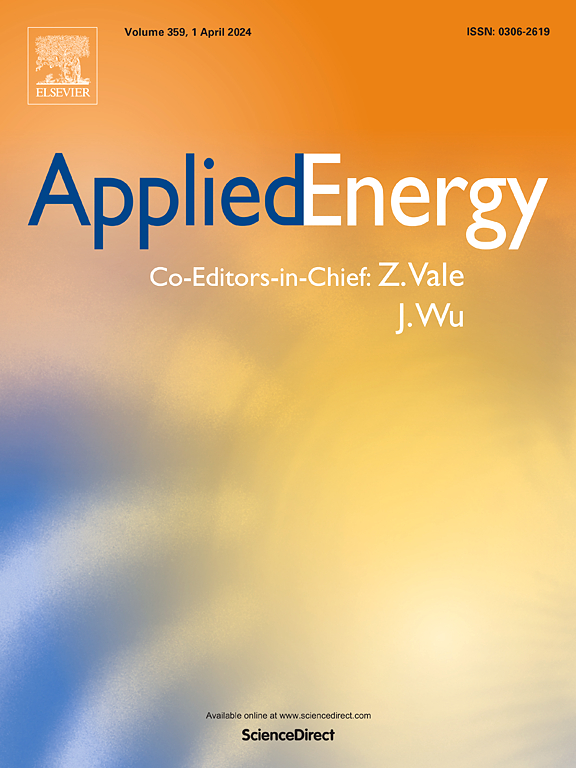Metal-organic framework nanocomposites: Engineering and morphological advances for photocatalytic CO2 conversion into fuel
IF 10.1
1区 工程技术
Q1 ENERGY & FUELS
引用次数: 0
Abstract
Global industrialization and fossil fuel consumption have elevated CO2 levels and caused global warming, causing catastrophes worldwide. Given this reality, removing CO2 from the atmosphere and transforming acquired CO2 into value-added resources like fuels and chemical feedstock is imperative to build a circular economy. The use of MOFs and their derivatives in CO2 photocatalytic conversion is eco-friendly and could alleviate future fuel shortages. Modern photocatalysts MOFs, consist of hybrid organic ligand, and inorganic nodal metals with customizable morphology. MOF flexible rational design allows several active sites to be added to a framework, generating a complex photocatalytic system. The first half critically studied morphology, photocatalytic reduction mechanism, pristine MOF applications, and MOF modification/functionalization for photocatalytic reduction of CO2. Their catalytic performance is currently insufficient for industrial usage because to poor light-harvesting and electron-hole separation. Researchers created MOF nanocomposites with many benefits by adding guest compounds. Morphological alterations, sensitization with polymers, plasmonic metals, and heterojunction generation with type I, type II, type III, and Z-scheme for MOF nanocomposites represent the current status of this large and significant research topic in the second half of paper. We presented the progress in photocatalytic CO2 reduction into fuels and chemical feedstock using MOF nanocomposites. This review discussed MOF nanocomposites' photocatalytic merits and cons and stimulate the advancement of more efficient and broadly applicable photocatalysts. The broad range of work assembled in this review will be very valuable to a wide spectrum of research on worldwide CO2 abatement.
金属-有机框架纳米复合材料:光催化CO2转化为燃料的工程和形态学进展
全球工业化和化石燃料消耗导致二氧化碳浓度升高,导致全球变暖,给世界带来灾难。考虑到这一现实,从大气中去除二氧化碳并将获取的二氧化碳转化为燃料和化工原料等增值资源,是建立循环经济的必要条件。mof及其衍生物在CO2光催化转化中的使用是生态友好的,可以缓解未来的燃料短缺。现代光催化剂MOFs,由杂化有机配体和具有可定制形态的无机节点金属组成。MOF灵活合理的设计允许多个活性位点添加到框架中,生成复杂的光催化系统。前半部分重点研究了形貌、光催化还原机制、原始MOF应用以及MOF光催化还原CO2的改性/功能化。由于光捕获和电子-空穴分离性能差,目前它们的催化性能不足以用于工业应用。研究人员通过添加客体化合物创造了具有许多优点的MOF纳米复合材料。MOF纳米复合材料的形态改变、聚合物敏化、等离子体金属以及I型、II型、III型和z型异质结的产生代表了论文后半部分这个大型而重要的研究课题的现状。介绍了利用MOF纳米复合材料光催化CO2还原为燃料和化工原料的研究进展。本文综述了MOF纳米复合材料光催化性能的优缺点,并展望了开发更高效、更广泛应用的光催化剂的前景。这篇综述所汇集的广泛的工作将对全球范围内二氧化碳减排的广泛研究非常有价值。
本文章由计算机程序翻译,如有差异,请以英文原文为准。
求助全文
约1分钟内获得全文
求助全文
来源期刊

Applied Energy
工程技术-工程:化工
CiteScore
21.20
自引率
10.70%
发文量
1830
审稿时长
41 days
期刊介绍:
Applied Energy serves as a platform for sharing innovations, research, development, and demonstrations in energy conversion, conservation, and sustainable energy systems. The journal covers topics such as optimal energy resource use, environmental pollutant mitigation, and energy process analysis. It welcomes original papers, review articles, technical notes, and letters to the editor. Authors are encouraged to submit manuscripts that bridge the gap between research, development, and implementation. The journal addresses a wide spectrum of topics, including fossil and renewable energy technologies, energy economics, and environmental impacts. Applied Energy also explores modeling and forecasting, conservation strategies, and the social and economic implications of energy policies, including climate change mitigation. It is complemented by the open-access journal Advances in Applied Energy.
 求助内容:
求助内容: 应助结果提醒方式:
应助结果提醒方式:


